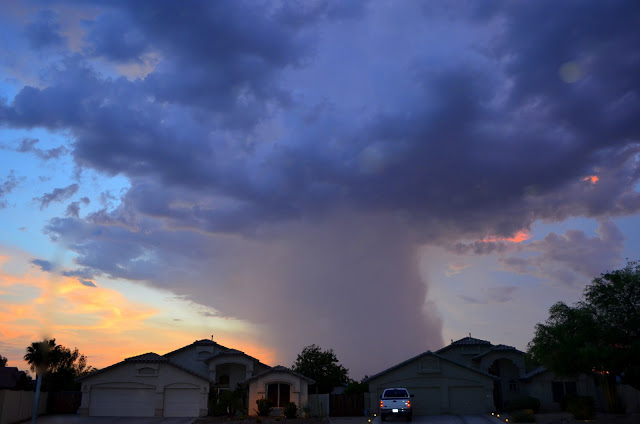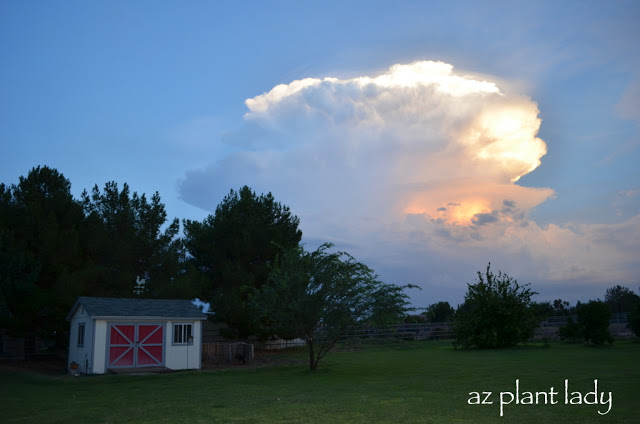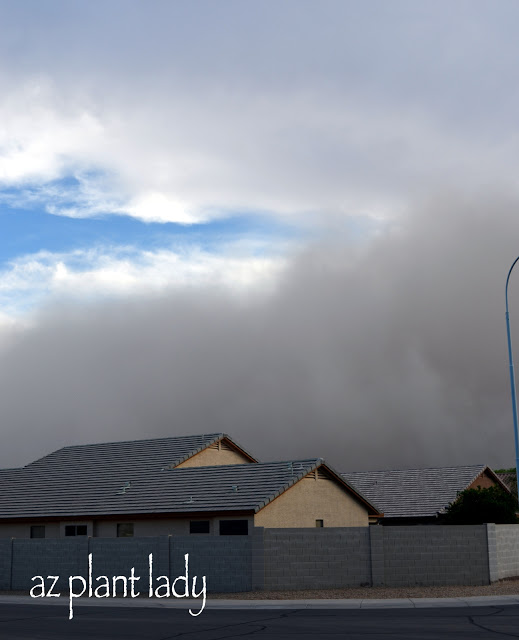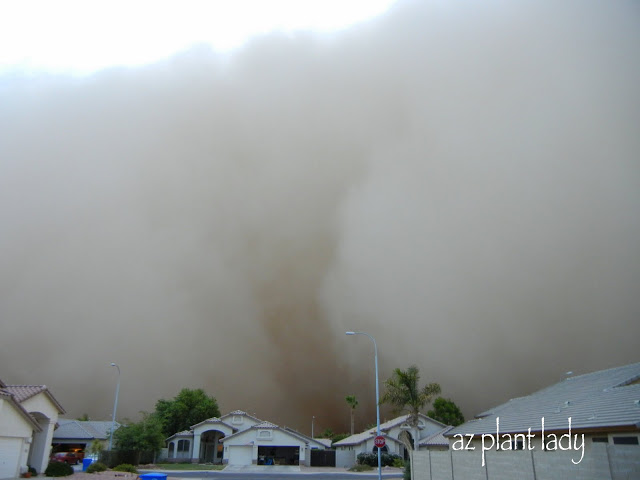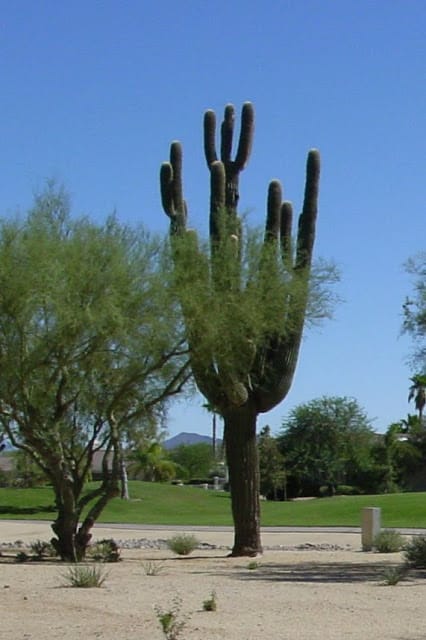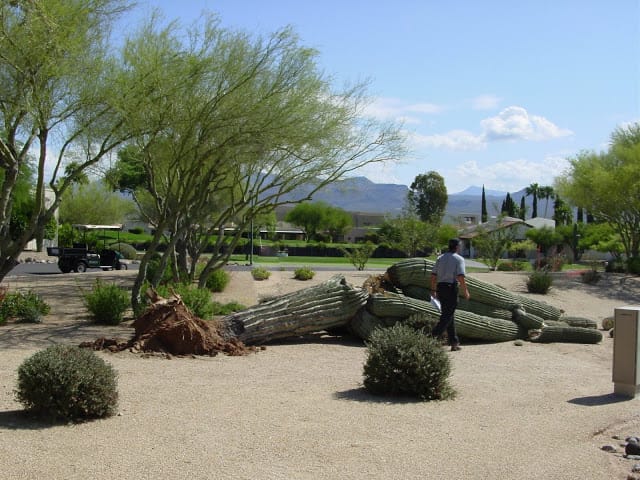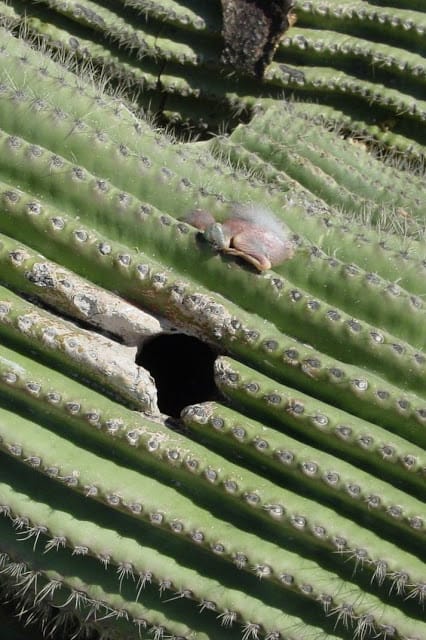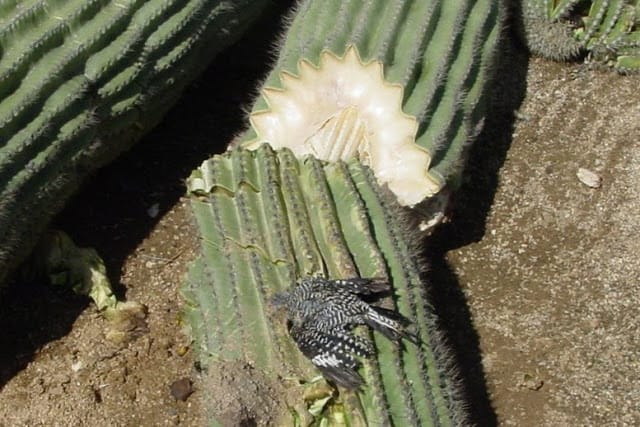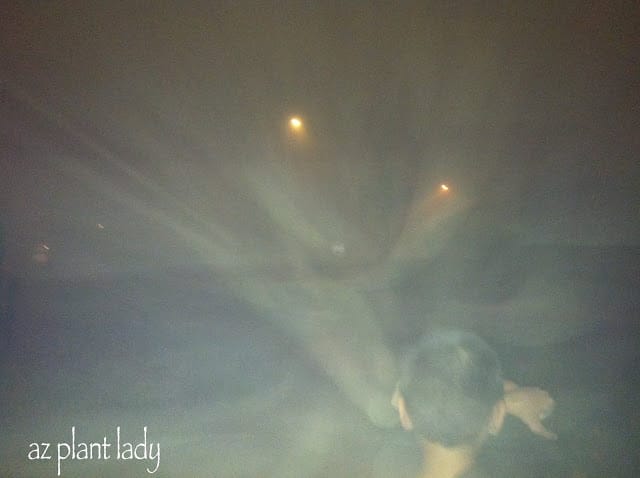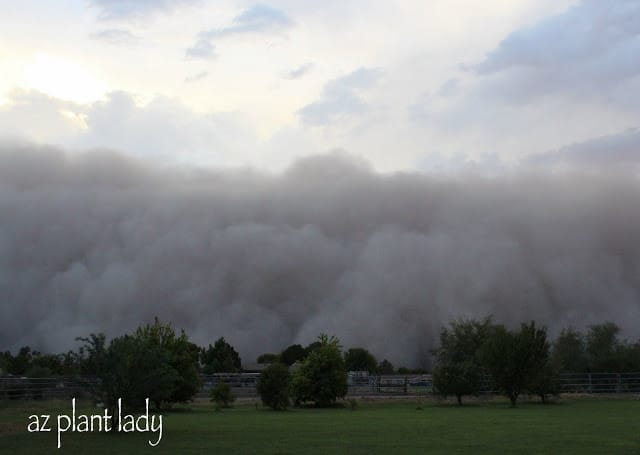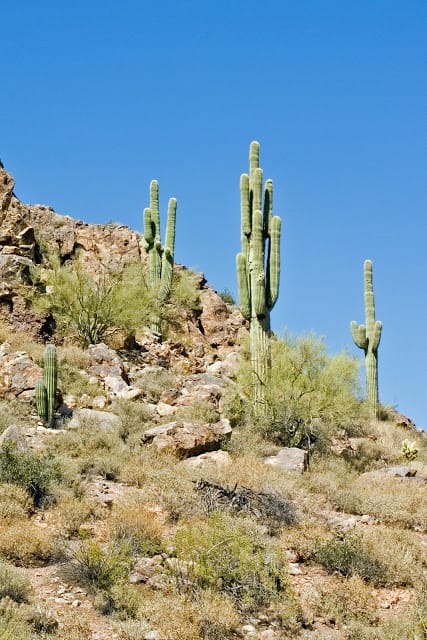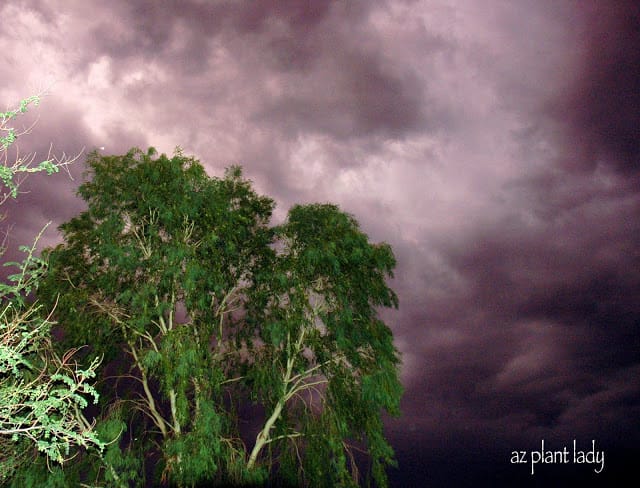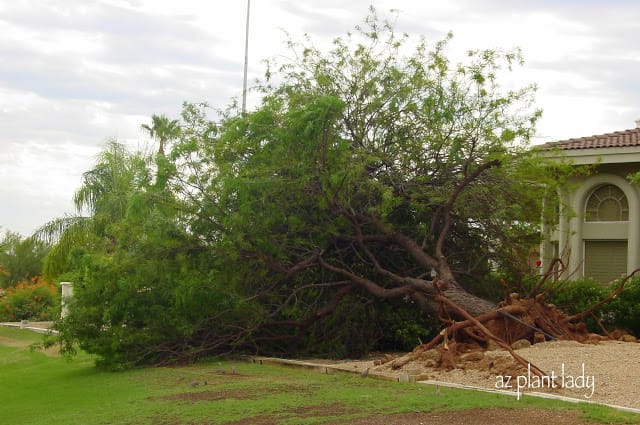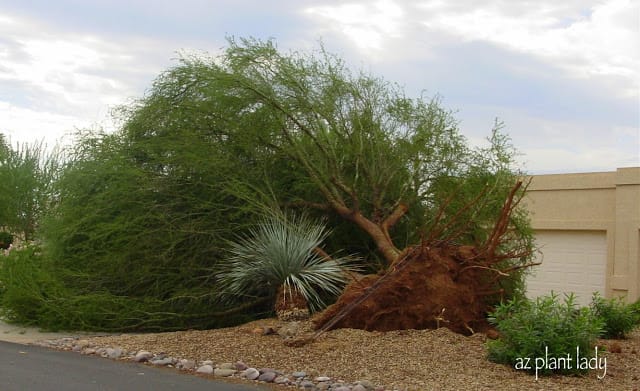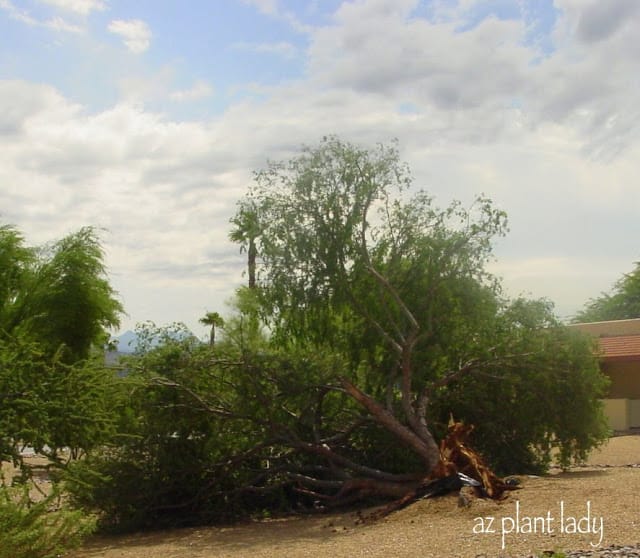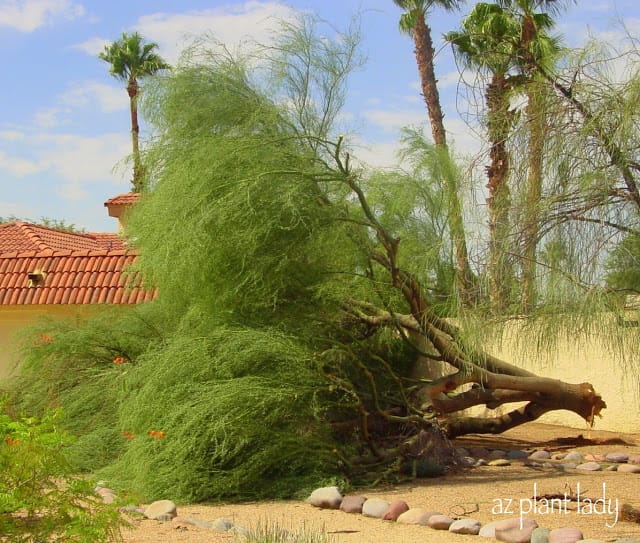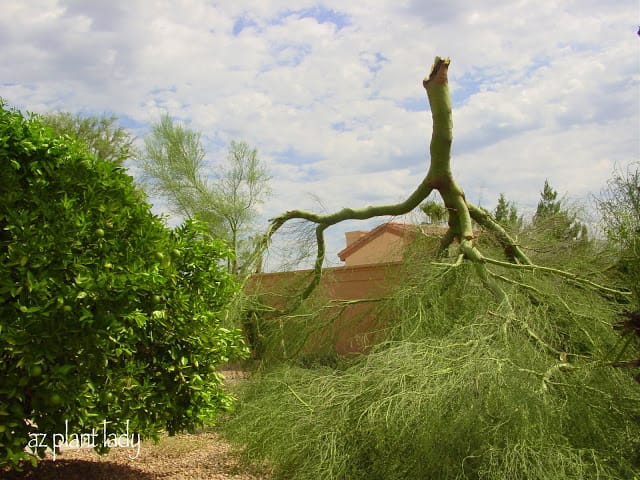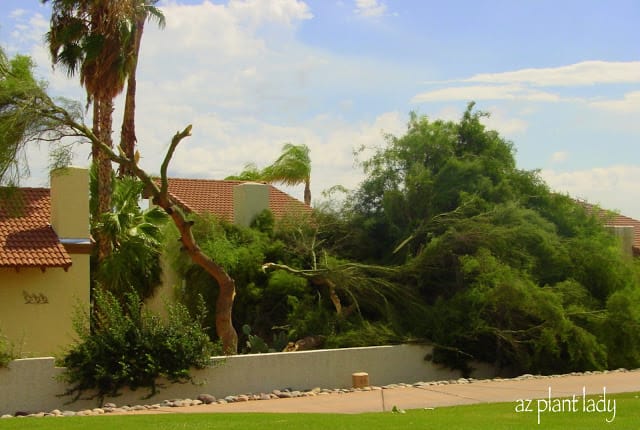Yesterday evening, I started to see the signs….
Gusty winds, thunder clouds, the smell of rain in the air and raindrops starting to fall. A monsoon storm was on it’s way.
Monsoon storm, Clouds gathering over my house and Eucalyptus tree.
When I first moved to the desert southwest from California, I was quite surprised that it rained in the desert frequently in the summer months. Where I came from, summer rain was quite rare.
Another surprise awaited me when I experienced my first monsoon storm….flying dust followed by high winds, thunderclouds, lightning and torrential downpours – these were definitely things that I had not experienced in California.
*The Sonoran Desert has two rainy seasons, one in the winter and one in the summer. Because of this our desert has the most animal and plant species of any North American desert. We have over 2,000 native plant species alone.
Although I love monsoon storms, I would dread going to work the day afterward because I knew that there could be a lot of tree damage to deal with due to the high winds…especially on the golf courses. I would have to personally check all of the trees…some were completely blown over with roots sticking out and my crew would quickly cut them up. Other trees would half in and half out of the soil and I would have to decide if we could save them or not.
One summer brought a severe micro-burst over the area where I worked and the damage to the trees on the golf courses were thankfully, minimal, except for a large Saguaro cactus that was lost and just a handful of trees.
However, it was the damaged trees that I saw as a result of the storm in the residential areas that was shocking.
There were the trees that had been completely blown over…
Fallen Mesquite
Fallen Palo Verde
Fallen Ironwood
Some trees were completely snapped off at their base….
Palo Verde
Some trees that completely lost their head…literally.
This Palo Verde snapped off halfway up the trunk.
Some trees looked like they were swallowing up homes….
Although we did suffer some losses on the golf courses and landscape areas, the homeowners were hit the hardest in regards to damaged trees – mostly because their trees were either somewhat top-heavy or had not been pruned recently, or pruned correctly.
You may be asking, what can I do to avoid having this happen to my tree? Well, there are some steps that you can take to help prevent wind damage, BUT even if you maintain your trees correctly, wind damage may be unavoidable. Following these tips will increase your chances of escaping severe wind damage, but nothing can totally prevent it due to circumstances beyond your control.
First, you may notice that all the trees in the pictures had a single (standard) trunk. Imagine holding a lollipop at the base of the stick. The top of the lollipop is quite heavy, isn’t it? Well, this is the same for many single trunk trees. Many desert trees such as Mesquite, Palo Verde, Sweet Acacia and Ironwood are available in both standard (single) or multi-trunk forms. In my opinion, multi-trunk trees are more attractive in addition to the fact that they are less likely to suffer damage from wind because the weight of the branches is more evenly distributed among multiple tree trunks.
Second, proper pruning will help your trees to weather the storms. I would always schedule our annual tree pruning to be done before the monsoon season would begin. The International Society of Arboriculture has excellent information on how to prune mature trees which can be found here. Trees add lots of value to your house – not just aesthetically, but in dollars as well. So, it is worth the investment to hire a Certified Arborist to advise you on the correct way to prune your trees. Most also offer pruning services for your trees as well. *You can find a Certified Arborist in your area by following this link.
Last, make sure that your trees are watered correctly. Trees need to be watered deeply, so that their roots will grow down into the soil. Repeated shallow watering results in tree roots that are close to the surface and are not able to anchor a tree against high winds.
As I write this, I see storm clouds gathering to the east. I am hoping for a nice rainstorm tonight, without the high winds 😉
